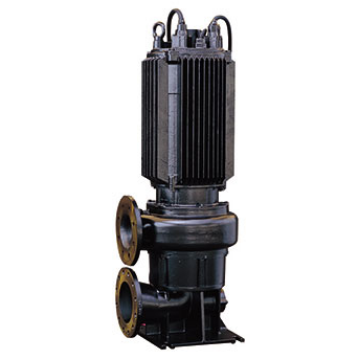Protection from flooding from heavy rains Stormwater Drainage Facilities
BackStormwater storage tunnel
Temporary storage of large volumes of stormwater
During heavy rains, stormwater is temporarily stored in tunnels to prevent flooding. After the storm subsides, the stored water is safely released into streams.
Control basin

Temporary storage of large volumes of stormwater
During heavy rains, stormwater is temporarily stored in control basins to prevent flooding. After the storm subsides, the stored water is safely released into streams.
-
 CN(CNX)-N
CN(CNX)-N
(internally cooled) -
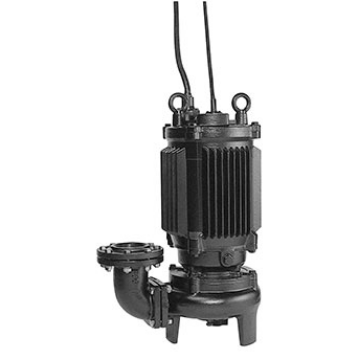 CNQ
CNQ
(air cooled)
Drainage pump station

Draining overflow with pumps
Drainage pump stations are installed where smaller rivers flow into larger rivers to prevent flooding fr om the smaller river during heavy rains. These stations use pumps to swiftly drain water into the larger river.
-
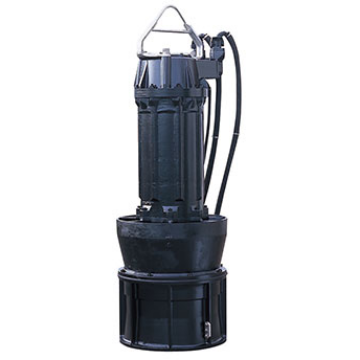 Columnar
Columnar
submersible pumps
SD/SA -
 CN(CNX)-N
CN(CNX)-N
(internally cooled)
How do drainage pump stations work?
When the water level of the larger river rises, water begins to flow backward up the smaller tributaries, flooding the surrounding area.
To prevent this, sluice gates at the point where the rivers meet are shut to hold back the water. However, with its outlet shut, the level of the smaller river will eventually rise.
The role of the drainage pump station is to drain this water into the main river.
Integrated sluice gate and pump for compact installation
This solution enables the installation of pumping facilities even where no land is available for a large drainage pump station by using the existing natural stream channel. This allows drainage while preventing backflow when water levels rise.
-
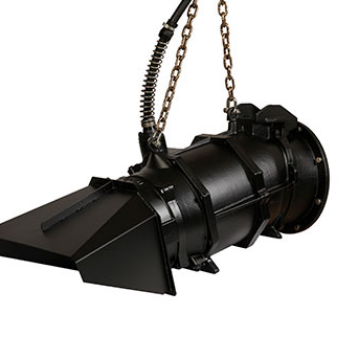 All-speed, all-level
All-speed, all-level
horizontal-shaft
submersible pumps
SAH-L/SDH-L
Select the pump best suited to the site
-
Pump gate
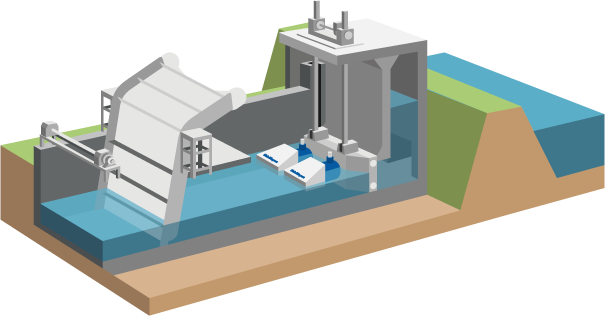
Pump and gate are integrated, ideal for small-scale drainage pump stations. Facilities are installed within the natural stream channel.
-
Wall pump
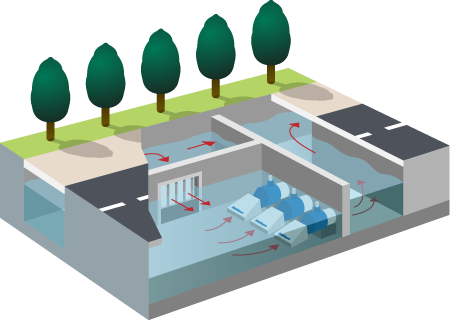
Equipment for small-scale drainage pump stations that use horizontal-shaft submersible pumps. The natural channel is widened only where the pump is.
The difference a pump gate makes
-
① When the main river rises
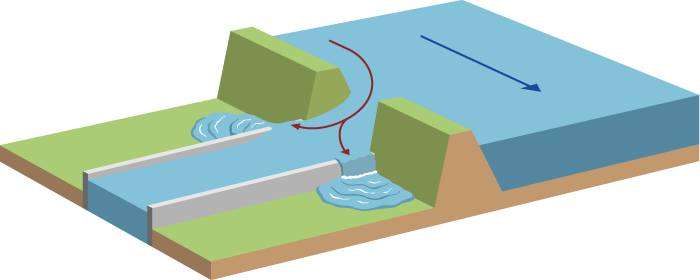
When the main river rises due to heavy rains, the water flows backward up tributary streams, causing flooding.
-
② Just shutting the sluice gate is not enough
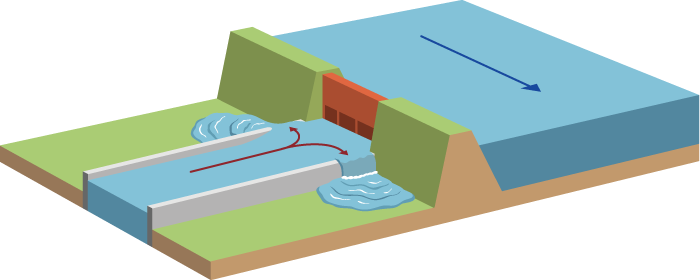
Shutting the sluice gate can prevent backflow from the larger river, but with nowhere to go, the water in the smaller stream backs up and floods the surrounding area.
-
③ Temporary drainage to the rescue!

The water of the tributary is pumped into the main river with temporary pumps to prevent flooding.
-
④ Even more efficient drainage
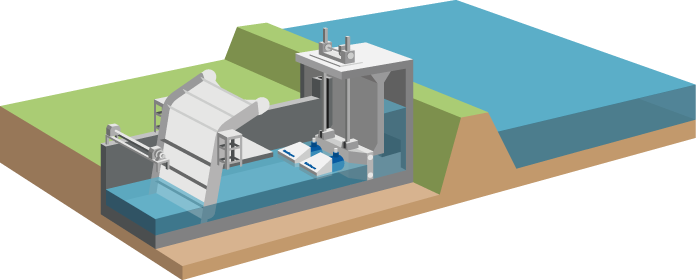
A pump gate enables even more efficient mass drainage with a small footprint.
Please contact our sales department for further details.
Inquiry form
